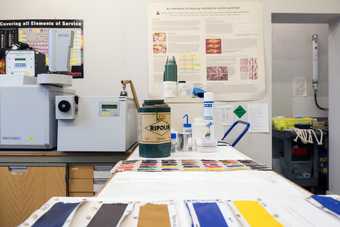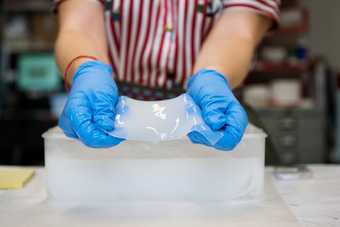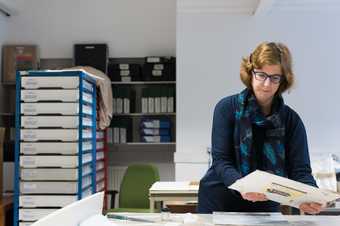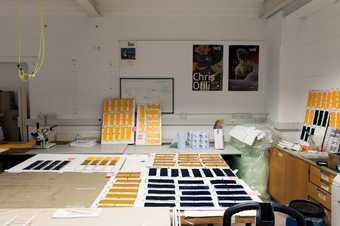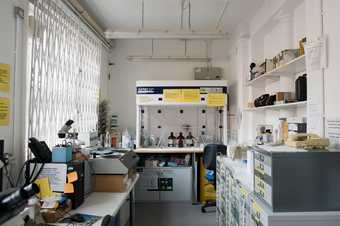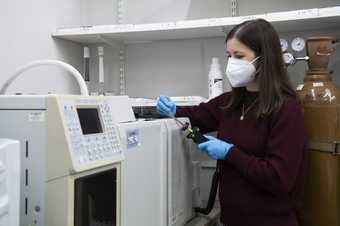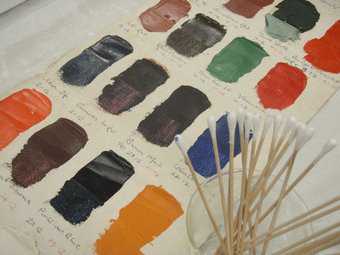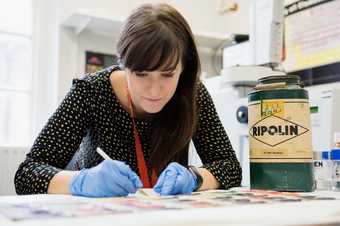
Conservation Scientist Dr Judith Lee sampling paint that was applied in the mid-20th century, for analysis
Conservation scientists study artists’ materials and techniques, and conservation materials, and how they change over time. Preventive conservation may be defined as all actions which slow or halt the damage or decline of artworks. Both are vital to supporting conservation treatments, practice and access to works of art.
1. Conservation Science tasks
- Study how artworks are made, particularly those that are difficult to conserve or poorly understood
- Lead on or join internationally collaborative research projects and initiatives (such as the Modern Oils Research Consortium) and produce publications on a range of artists, a single artist or a particular art or conservation material
- Provide scientific analysis of °Ő˛ąłŮ±đ’s collection
- Use a range of microscopic, spectroscopic and mass spectrometric techniques to identify materials and/or understand how they may change over time
- Disseminate knowledge to the wider heritage and scientific professions and the general public
2. Preventive Conservation tasks
- Collect, analyse and report on environmental and pest data collected in spaces containing art. Environmental data includes temperature and relative humidity levels, light exposure, dust and pollutants
- Adopt and endorse the , a set of guidelines for environmental conditions for collections
- Monitor °Ő˛ąłŮ±đ’s display and storage environments (which vary depending on the building structure or activity in the space)
- Answer questions regarding the use, display and safe transport of the collections

